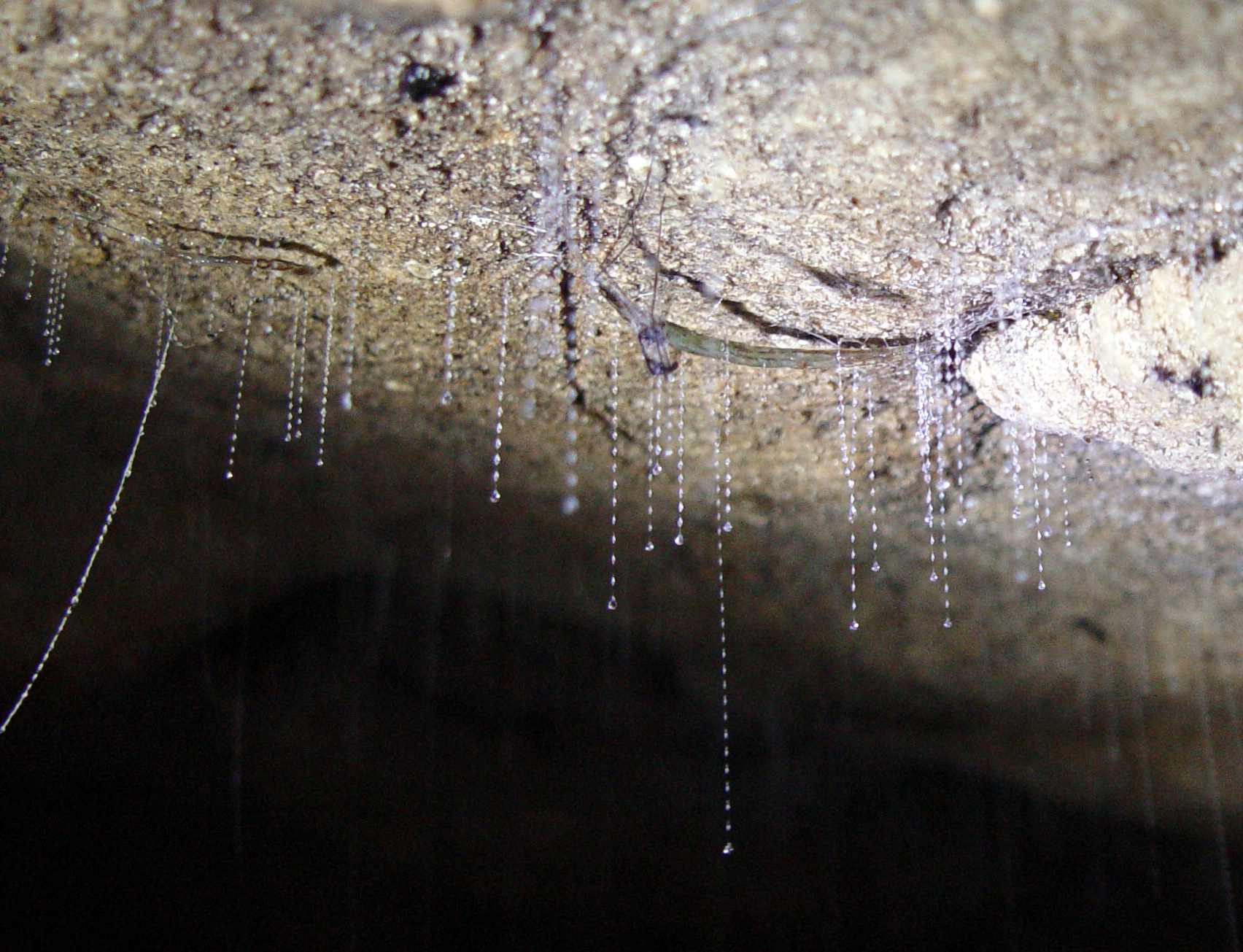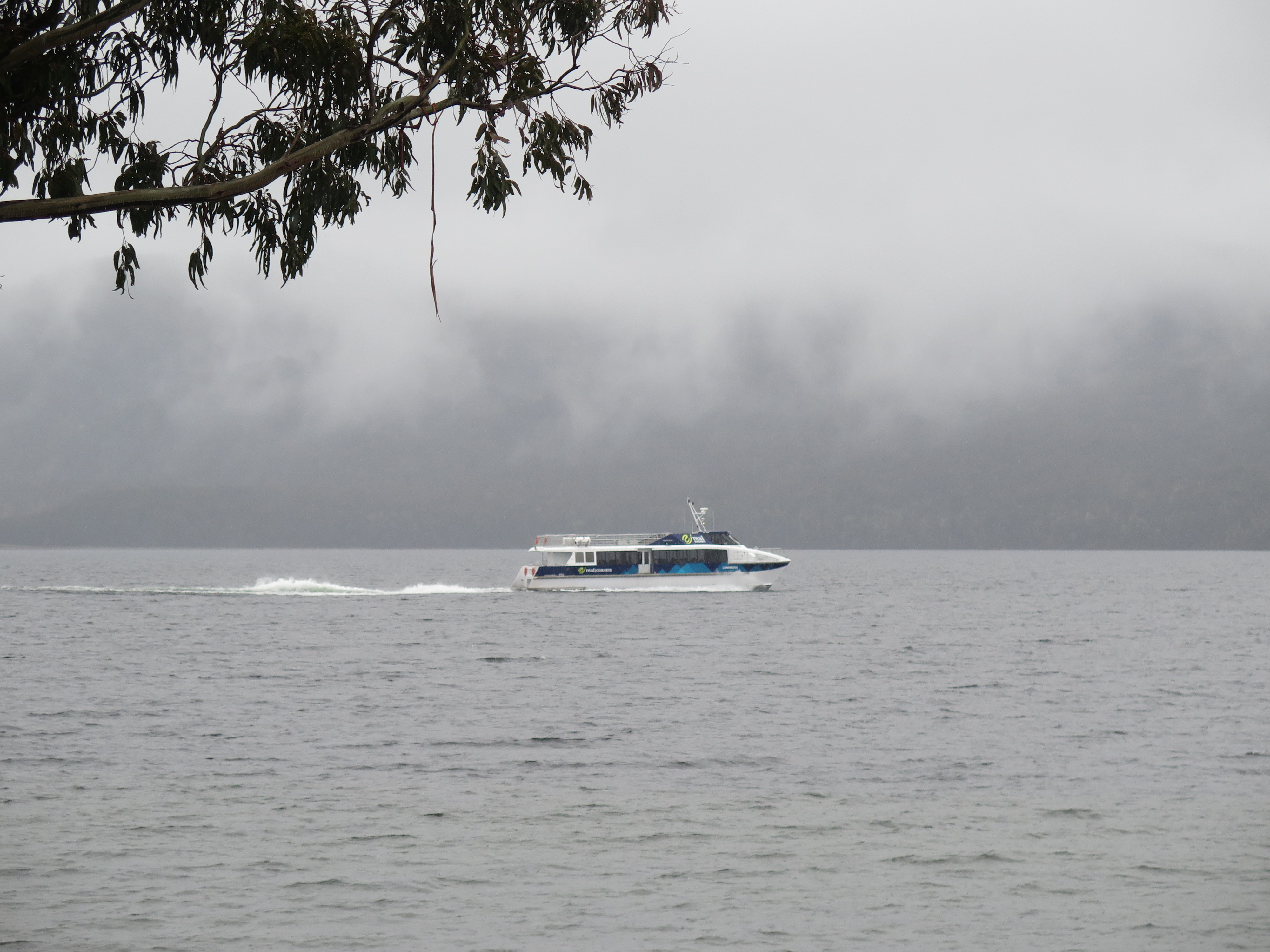Today we went to see fungus gnats. This may not, on the face of it sound like a scintillating day, but … if I described them as glowworms, then it might sound more appealing. Actually glowworms are the larval stage of the fungus gnat. They are more accurately known as Arachnocampa. They have a bioluminescent larval stage and are endemic to Australia and New Zealand, living in caves and grottos, or sheltered places in forests.
The gnats start as eggs. Female gnats lay around 130 eggs all year round, though they tend to be more active in the summer around December. Once they have laid their eggs, their work is done and they die. The eggs hatch and form a larva, building a kind of hammock like nest to live in. Once comfortable, they feed by exuding a silk string with droplets of mucus. These will trap unwary insects and to attract them into the trap, they glow. The glow is a chemical reaction involving the luciferase enzyme acting on the luciferin substrate. This is combined with adenosine triphosphate and oxygen to form the bioluminescence. The larva can alter the intensity of the glow by adding more or less oxygen and it does this according to how hungry they are. The hungrier they are, the brighter they will glow to attract prey.

The glowworms can only live in cave systems as if there was any wind, their snares would get snagged, so to get to the glowworms we had to take a boat trip to the other shore of Lake Te Anau. This took us past some glacial islands known locally as the dome islands. These are formed of gneiss rock which was left because it was harder than the surrounding rocks and the glaciers were unable to wear it away as fast. After about 25 minutes on the boat we got to the cave system.
To access the glowworms there is initially a boardwalk through the cave system. This is in itself quite dramatic as the river, called the Tunnel Burn, rushes underneath at high speed with various waterfalls and whirlpools. The cave system is quite young in geological terms at this end and so has no stalactites or stalagmites. At the top of one waterfall is a pool and we then got into a metal punt with space for around 12 at a time. In this boat we were pulled into the pool in the pitch black by the guide who was, we think, using wires mounted into the rock. However, it was pitch black, so we couldn’t see him even a few feet away! The darkness though did mean that we got to see the glowworms very clearly – a slightly unreal sight reminiscent of a starry night but only a foot or so away from us.
In the evening we went to the local cinema to see a film made about Fiordland – mostly shot from helicopters with some vertigo inducing shots or the spectacular waterfalls that surround the fiords. This was probably the best way to see Fiordland today as it was one of the 200 days a year when it rains. This combined with snow at high levels meant that the Milford Sound road was closed again anyway, so no tours there at all today.
